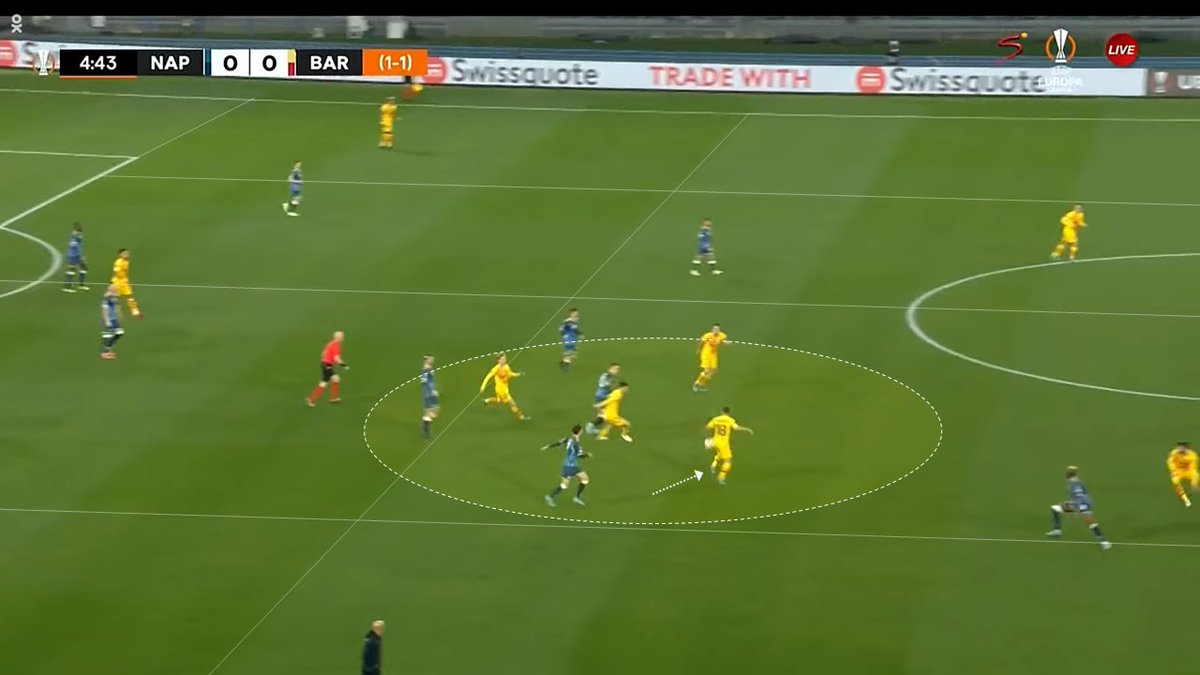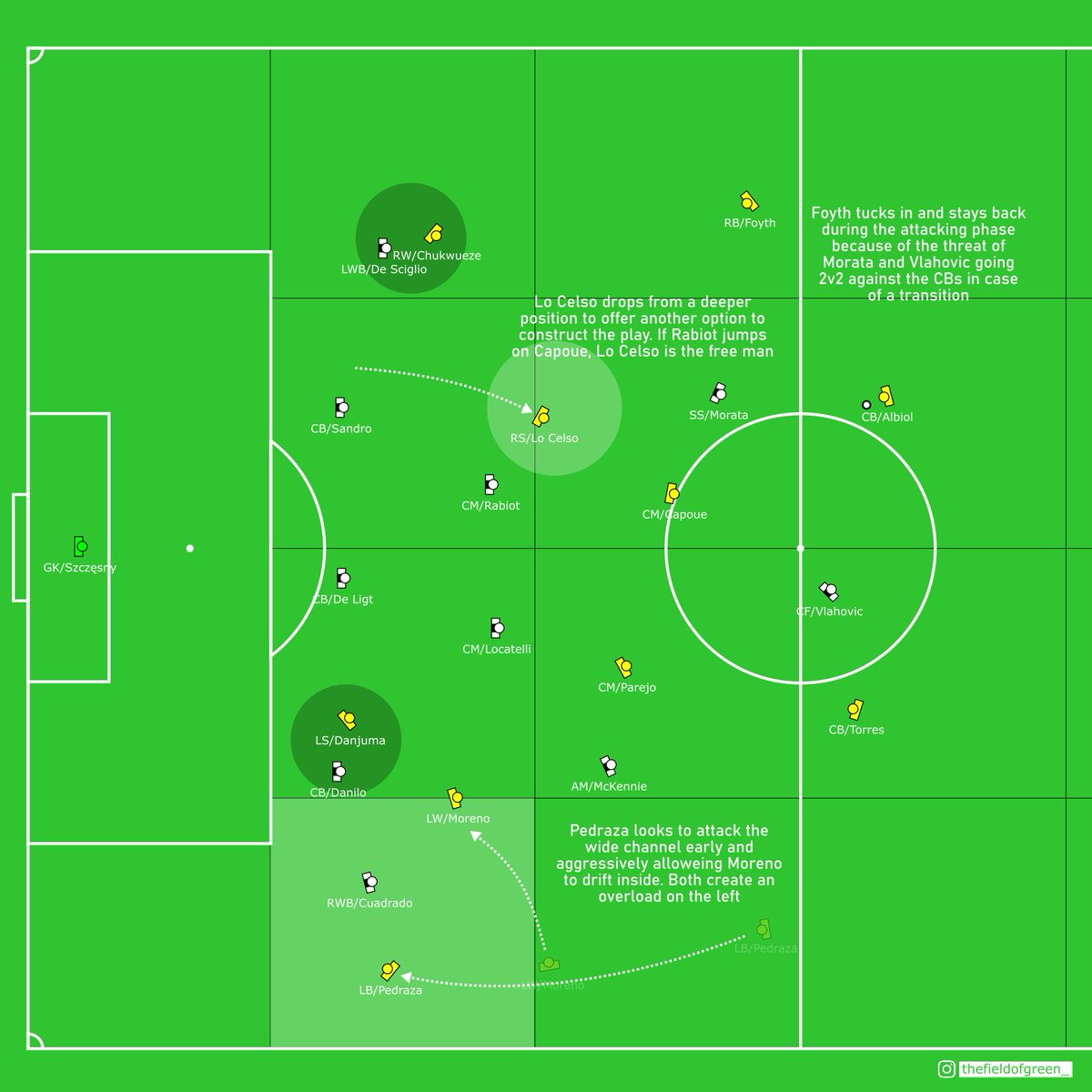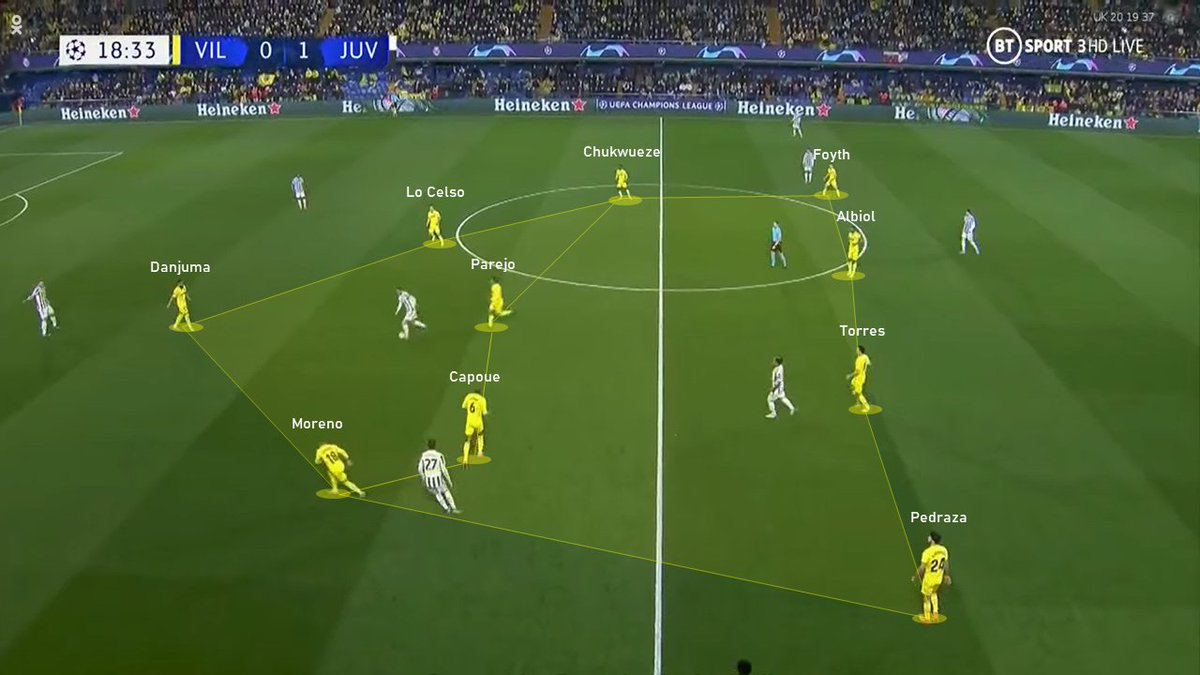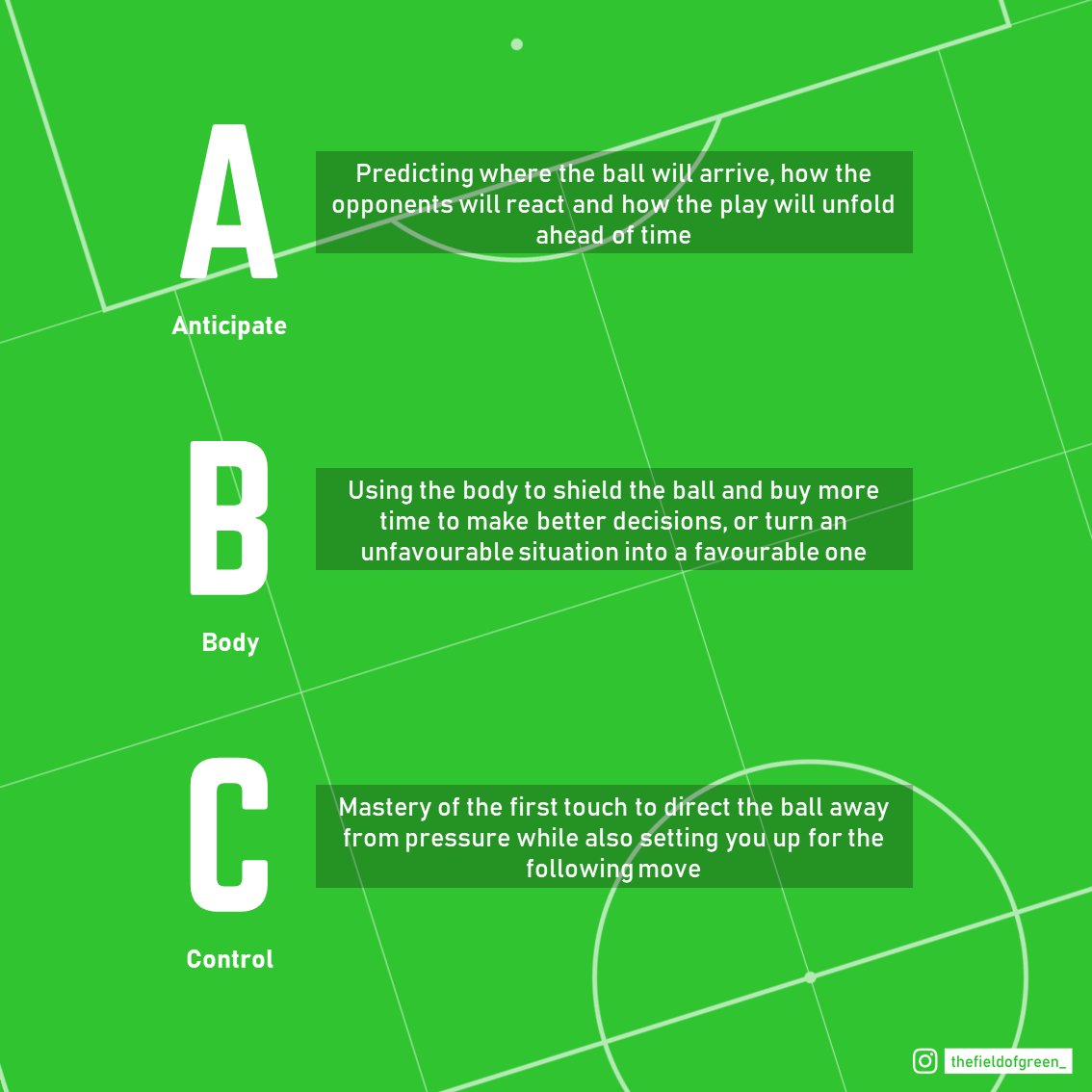The dynamic nature of space on the pitch
[THREAD]
How are spaces interpreted during the game? How different is it to the way coaches and analysts depict it on a tactic board? How far does science interpret it the same way as players. I explore these topics in my latest article:
[THREAD]
How are spaces interpreted during the game? How different is it to the way coaches and analysts depict it on a tactic board? How far does science interpret it the same way as players. I explore these topics in my latest article:

Success in executing the game model or plan also demands that the whole team interpret the same spaces in the same way. If you want to convey your ideas using the lexicon of space in football, you must understand their natureto achieve similar consistency in their interpretation.
The issue with attempting to achieve an objective analysis of space in football is its abstractness. Space on a pitch doesn’t exist the way it is usually depicted by coaches on a tactic board. Every player who has played the game understands this.
A coach’s tactic board represents the players as 22 identical circular objects and their positions define the space available to play. During the game, space in terms of its physical properties is not static. Space is dynamic.
The speed and direction along with the body profile of each player influences each individual player’s momentum which subsequently influences the space held by the players. Furthermore, apart from the spatial variables, there is also the variable of time.
For e.g., a CB is looking to switch play to the right. The game model requires the RB to create superiority behind the line of press by moving into a position between the lines. Space is commonly defined as the area of the trapezium whose vertices are 4 players – a, b, c and d. 



However, during the game, the players do not perceive this space as a static geometrical shape. It is perceived dynamically by also considering the momenta of the four players – pa, pb, pc and pd respectively. the CB and the RW have their own momenta, pCB and pRW respectively. 

The further spaces generated also depend on the direction and momentum of each player. This is why I posit representing the anatomical orientation of players than circular objects to depict the spaces they influence better. 



Here is why body orientation is important in conveying ideas about spaces - A CM with the ball is looking to play a pass through players a and b to the LW. a and b are 10m apart. 

Even if the mathematical distance is 10m, there is a big difference in the nature of the space if the body orientation and directional momentum of b is different. With the same 10m distance, there is more space on the right illustration than on the left! 



I also look briefly at Voronoi diagrams and how they don't convey all the information at a given instance, and why players don't percieve spaces the same way during the game. 

Zooming into the specific situation of on the left wing, where the 🔵LW holds majority of the space than the 🔴RB according to the Voronoi which treats them as identical points. 

But if we look at the body orientation as well, the spatial configuration should be different in these two cases. From the perspective of the CM with the ball, the LW with forward momentum dominates more of the space than if the LW is still facing backward. 



Pitch control is much better at solving these issues and interpreting spaces with greater probability. But fundamentally, I still believe it's far from how players perceive spaces because pitch control tells you about space occupation in the present.
Through periodically scanning their surroundings, players construct a panorama in their heads with multiple images. This panorama helps them conceive a space-time model. A space-time model is a prediction of how space-time will transform in the near future.
The closer the model is to how the space-time is in reality, the better the player is able to choose the right action during the game. For e.g. if a CM is looking to receive the ball from a fellow CB, through scanning, a space-time model is concieved. 



While scanning, if the CM detects a marker pressing with momentum pCM, the position of the marker is estimated even while not looking at the ball, and the player senses how the space-time is changing to decide on the further action - pass back or receive on the half-turn 



Players also predict the position of fellow teammates, the ball and future spaces considering the inertial momenta and body orientation of players in the surroundings. Active space-time modelling helps to perceive how the game is developing even while not observing. 



How much space and time a player perceives he/she has is influenced by a lot of factors, but most predominantly by his/her scanning behaviour.
'Space and time are relative — they depend on an observer’s speed. But the speed of light is more fundamental than either.' ― Einstein
'Space and time are relative — they depend on an observer’s speed. But the speed of light is more fundamental than either.' ― Einstein
Since the observers (players) are in motion, the perception of space and time is relative to each observer. Constant, efficient and active scanning enables players to model their space-time predictions as close to reality as possible and consistent to one another.
Fundamentally, I believe that the ball is the only thing that is absolute in the game. Everything else is relative and therefore subject to interpretation by the players who play the game.
This explains the technical challenge of scoring a goal versus playing a pass. A pass, even a long one, can be off by a couple of metres and still be counted as accurate because the receiver has the freedom of space to adapt to the error margin and still receive it successfully.
A shot on goal, however, if off by even millimetres results in rebounding off posts or a fingertip save by the keeper.
Chaos and order, even in the game, is a matter of perspective. To develop as a coach or an analyst, we must embrace the chaos that the game presents at the level of the players who play it and not hide behind the order of observing the game that a privileged point of view offers.
Read the full article here: thefieldofgreen.com/2022/01/13/the…
I found it a complex topic to discuss in words, although it happens intuitively in the game!
Always happy to recieve feedback and listen to other perspectives to understand it better. Appreciate all RTs and shares.
I found it a complex topic to discuss in words, although it happens intuitively in the game!
Always happy to recieve feedback and listen to other perspectives to understand it better. Appreciate all RTs and shares.
• • •
Missing some Tweet in this thread? You can try to
force a refresh





















